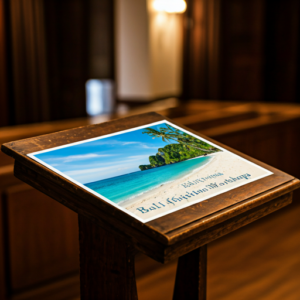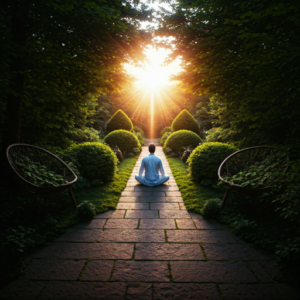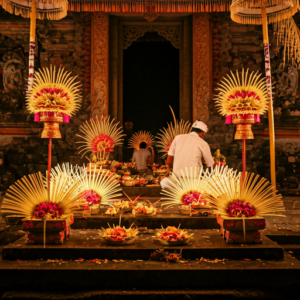The mesmerizing Sacred Balinese Dance has captivated audiences worldwide for centuries, representing not just an art form but a profound spiritual connection between the physical and divine realms. This ancient tradition serves as a living testament to Bali’s rich cultural heritage, where every graceful movement and intricate gesture carries deep symbolic meaning.
When you witness a Sacred Balinese Dance performance, you’re not just watching entertainment – you’re participating in a sacred ritual that has been passed down through generations. The dancers, adorned in elaborate costumes and headpieces, become vessels for divine energy, bridging the gap between the earthly and spiritual worlds.
The significance of Sacred Balinese Dance extends far beyond its aesthetic appeal. These dances are integral to religious ceremonies, temple festivals, and important cultural celebrations. Each performance is a carefully choreographed prayer, where dancers move with precise control and deep spiritual concentration.
What Makes Sacred Balinese Dance Unique?
Understanding what sets these dances apart requires looking at their distinctive characteristics. The movements are incredibly detailed, from the subtle fluttering of fingers to the sharp, angular positions of the arms and legs. Every gesture has meaning – a slight tilt of the head might represent curiosity, while rapid eye movements could symbolize divine awareness.
The History Behind Sacred Balinese Dance
Tracing back hundreds of years, these sacred performances evolved from ancient Hindu-Buddhist traditions that arrived in Indonesia. Over time, they became uniquely Balinese, incorporating local customs and beliefs to create something entirely distinctive.
Where Can You Experience These Dances?
The most authentic performances take place in Balinese temples during religious ceremonies. However, visitors can also witness these dances at cultural centers in major towns like Ubud, Denpasar, and Gianyar. Many hotels and cultural venues offer regularly scheduled performances, though these tend to be modified versions of the more sacred variants.
When Are Sacred Dances Performed?
These performances typically coincide with important dates in the Balinese calendar. Major temple ceremonies, full moon celebrations, and religious holidays are prime times to witness these dances in their true spiritual context. Some dances are only performed during specific ceremonies or times of the year.
Why Are These Dances Important?
The preservation of these dances ensures the continuation of Balinese cultural identity. They serve multiple purposes:
- Spiritual connection with deities
- Cultural education for younger generations
- Historical storytelling
- Community bonding
- Artistic expression
- Cultural preservation
Who Performs These Sacred Dances?
Not just anyone can become a sacred dancer. Training typically begins at a very young age, with students learning not only the physical movements but also the spiritual significance behind each gesture. Dancers must understand:
- Complex choreography
- Traditional musical accompaniment
- Religious significance
- Character interpretation
- Costume etiquette
- Spiritual preparation
How to Appreciate Sacred Balinese Dance
To truly appreciate these performances, consider the following:
- Learn Basic Gestures Understanding common hand positions and facial expressions will help you follow the story better.
- Respect the Sacred Nature Remember that these aren’t mere performances but spiritual practices with deep religious significance.
- Watch the Details Pay attention to the intricate costume elements, facial expressions, and subtle movements.
- Listen to the Gamelan The traditional musical accompaniment is integral to the performance, creating rhythm and atmosphere.
- Study the Story Many dances tell specific stories from Hindu epics or Balinese folklore.
The Impact on Modern Culture
These ancient traditions continue to influence contemporary Balinese life. Modern dancers and choreographers often draw inspiration from sacred forms while creating new interpretations. However, they maintain a clear distinction between sacred and secular performances.
The Future of the Tradition
As Bali faces modernization and growing tourism, efforts to preserve Sacred Balinese Dance have intensified. Dance schools, cultural organizations, and the government work together to ensure these traditions survive for future generations. They’re adapting to modern times while maintaining their spiritual essence.
The Role of Tourism
While tourism has brought wider recognition to these dances, it’s created both opportunities and challenges. Cultural organizations work to balance accessibility for visitors with preserving the sacred nature of these performances.
Educational Initiatives
Many programs now focus on teaching young Balinese about their dance heritage. These initiatives ensure that:
- Traditional techniques are preserved
- Spiritual significance is understood
- Cultural values are maintained
- Historical context is appreciated
The Global Recognition
UNESCO’s recognition of Balinese dance as an Intangible Cultural Heritage has helped raise awareness about its importance. This has led to increased support for preservation efforts and cultural exchange programs.
Costume and Makeup Traditions
The elaborate costumes and makeup used in Sacred Balinese Dance are art forms in themselves. Each element has symbolic meaning:
- Colors represent different emotions and characters
- Patterns reflect social status and role
- Headdresses indicate character type
- Fabric choices carry cultural significance
The Music Connection
The relationship between dance and gamelan music is inseparable. The complex musical arrangements guide dancers through their performances, creating a complete spiritual and artistic experience.
In conclusion, Sacred Balinese Dance represents more than just a cultural tradition – it’s a living, breathing art form that continues to evolve while maintaining its deep spiritual roots. As we move further into the 21st century, these dances remain a powerful reminder of the importance of preserving cultural heritage while adapting to changing times.






